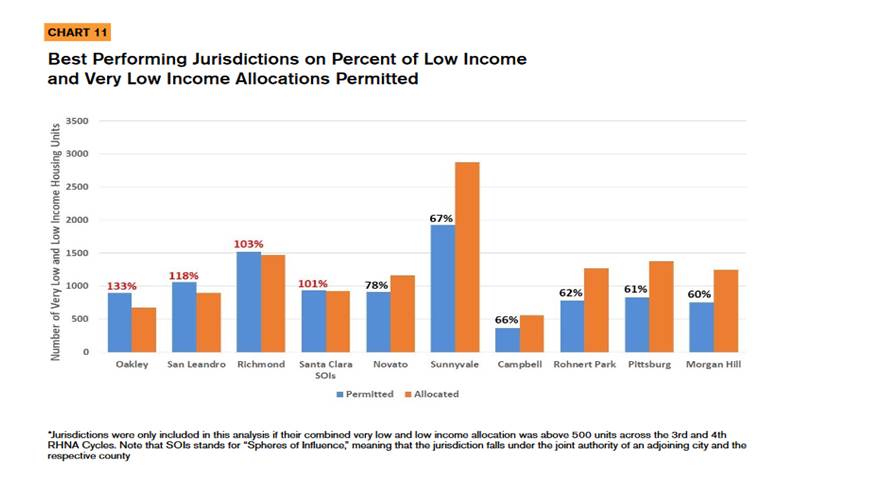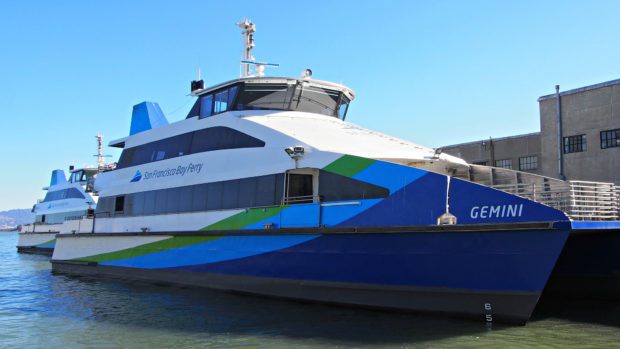|
| Only Eli Moore and the Hass Institute can find a way to make a lemon out of lemonade, finding a way to anticipate Richmond ferry service with pessimism and cynicism. These are the same people who helped kill the Global Campus because they saw only adverse impacts and tried to hold it hostage to their untenable demands.
I have advocated for Richmond ferry service for years because it offers so much for Richmond residents. It will increase access to jobs, promote tourism and provide incentives for housing construction and new businesses.
Moore and the Haas Institute are singularly obsessed with “gentrification” in Richmond, although our city continues to have among the lowest rents and housing prices in the Bay Area. Moore worries that not enough housing will be built, that not enough job training will be provided, that people won’t be able to find the ferry – and if they find it, they can’t afford it.
Moore and others, however, see a different approach. They stress that the ferry — and the development that comes with it —should not happen without investments in other services like job training programs, affordable housing initiatives, and fair-chance hiring policies. They argue these extra services are necessary for all Richmond community members to be able to benefit and take advantage of their changing city.
According to Moore, however, the greatest barrier for many Richmond residents isn’t cost or logistics: It’s knowledge. He recounted meeting young Richmond locals who have never ventured as far as the Miller Knox Regional Shoreline in Point Richmond. “If you’re not even going that far,” said Moore, “then you’re not going to feel comfortable or familiar with what it would take to go to San Francisco and set up interviews for jobs, or enroll in classes.”
Well, Richmond is actually doing quite well in all these respects. According to the Hass Institute, itself, Richmond is one of the few cities that has actually exceeded its RHNA (Regional Housing Needs Assessment) goals, and Richmond already operates an award-winning job training program. Because of Richmond’s aggressive inclusionary zoning, all new for sale housing adds millions to Richmond’s affordable housing fund.
One wonders why Moore and the Hass Institute haven’t chosen Berkeley, Oakland or even Vallejo as their anti-gentrification target. The reason is that Richmond’s RPA-controlled City Council offers a unique collaboration in their strange and cynical ideas about growth and prosperity.
Tom Butt

http://richmondconfidential.org/2017/10/03/new-richmond-ferry-terminal-can-it-stimulate-development-and-benefit-all-residents/

Richmond Confidential
Richmond, California News, Information, Art and Events.
New Richmond ferry terminal: can it stimulate development and benefit all residents?

A WETA ferry docked in San Francisco in 2014. Richmond will break ground on a new ferry terminal in the coming weeks. (Photo by Jack Snell)
By Sara Harrison Posted October 3, 2017 9:09 pm
This month, construction crews will finally break ground on the Richmond Ferry Terminal project. After years of planning, the local ferry, which will run from an existing wharf next to the Ford building to the Embarcadero in downtown San Francisco, will more directly connect the city to the S.F. economy.
Advocates and developers hope that the ferry’s short, 30-minute trip will encourage more Bay Area residents to consider Richmond as a place to work, live, and explore on the weekends. But tenants’ rights groups and researchers are more cautious about the effects this new connection could have on Richmond’s already strained housing market.
“Essentially, it stimulates economic development in Richmond,” said Mayor Tom Butt, a major early proponent of the project. He went on to praise the ferry, saying that it would give commuters a way to travel between Richmond and San Francisco “without having to get on the freeway or even to get on the overcrowded BART.”
With worsening traffic and a BART system that is overcrowded during commuting hours, people across the Bay Area are increasingly opting to take ferries. While BART reported the first dips in ridership in six years, the Water Emergency Transportation Authority (WETA) reported a 78 percent increase in ferry ridership since 2012, a trend that continued with a record-high 289,000 passengers taking WETA ferries in the month of July.
Bobby Winston, the proprietor of Bay Crossings, an online publication that focuses on Bay Area maritime and ferry issues, is thrilled by the change. “When I started advocating for ferries 20 years ago, the problem was keeping ferries from being canceled for lack of ridership,” he remembered. “Today, it’s exactly the opposite. We have problems of people being left on the dock because there’s just no room.”
Butt believes the ferry will have numerous positive outcomes for Richmond, including increasing tourism at the World War II Home Front and Craneway and rehabilitating Richmond’s image. According to the mayor, “having a ferry here helps emphasize the fact that we are in fact a waterfront city and that we have the amenities that other waterfront cities have.”
While gains in tourism may be modest — ferry operators on the Bay report a more than 50 percent decrease in ridership over the weekends — the ferry will certainly appeal to many commuters.
On a recent Wednesday afternoon in San Francisco, the line for the Vallejo ferry stretched more than 500 feet past the dock, curling around the front of the Ferry Building. “It’s such a relaxing experience,” enthused M. Fedyn, a Vallejo native whose been commuting by ferry for nearly 10 years. “It’s comfortable, there’s a lot of room on the boat, they serve snacks, treats, cocktails. It’s absolutely the best way to commute into the city.”
As housing prices and traffic continue to increase in the Bay Area, Butt is hoping that ferry service will give people who may “work in some tech industry in San Francisco, an opportunity to live in Richmond at a very low rate compared to say San Francisco or Oakland.”
Butt isn’t the only one banking on the ferry to bring business to Richmond. East Bay Modern Real Estate, a real estate firm that sells units at the Cove at Marina Bay development, is using the ferry to advertise their properties. “Prices surely will not remain this low,” their website proclaims, “especially with the launch of the Richmond Ferry service to San Francisco slated to begin in early 2018.”
Eli Moore, a researcher at UC Berkeley’s Haas Institute, who has studied gentrification in Richmond, describes the ferry “as being a conduit of opportunity,” adding that it’s “potentially a real game-changer in terms of access that residents have to jobs.”
But he was guardedly optimistic, warning that the conduit might not be equally available to everyone. WETA tickets can cost as much as $14.20/ride, so not all Richmond residents will be able to afford the service.
The wharf’s location — far from BART and most bus lines — adds another challenge, making it difficult for anyone without a car to easily reach the ferry.
According to Moore, however, the greatest barrier for many Richmond residents isn’t cost or logistics: It’s knowledge. He recounted meeting young Richmond locals who have never ventured as far as the Miller Knox Regional Shoreline in Point Richmond. “If you’re not even going that far,” said Moore, “then you’re not going to feel comfortable or familiar with what it would take to go to San Francisco and set up interviews for jobs, or enroll in classes.”
The impact of access to regional ferries can be seen in nearby Vallejo, where the ferry has been a central part of the city’s now-booming housing market. The once bankrupt city now boasts the “hottest” market in the country, according to Realtor.com, topping San Francisco and San Jose.
The “hotness” index, which measures how fast homes are selling (and also how many clicks they gather on Realtor.com), shows that as home prices continue to skyrocket, residents are looking farther afield. Home prices in Vallejo rose an incredible 11.5 percent this year, according to Zillow, and are predicted to rise another 4.5 percent in 2018.
Vallejo has become popular in recent years because the city combines relatively low housing prices with a ferry that provides a fast and easy commuting option into San Francisco.
Janel Letostak moved from San Francisco to Vallejo two years ago. She and her husband chose the city largely because they “couldn’t afford anywhere else.” Now, she commutes to her job in San Francisco on the ferry. “It’s better than driving in that awful traffic,” she explained, referring to the chronic congestion on Interstate 80.
Although the change may not be immediate, Bay Crossings’ Bobby Winston says the Richmond ferry could be equally transformative.
“You know people don’t just sell their house and move over night,” Winston said. “It’s going to have a real effect for Richmond, though. It really will. It’s gonna put Richmond on the map.”
When asked about the potential impact ferry service could have on the Richmond housing market, Butt was unequivocal. “I think we need a boom,” he stated. “Any way we can stimulate construction of new housing is a good thing for everybody.”
Moore and others, however, see a different approach. They stress that the ferry — and the development that comes with it —should not happen without investments in other services like job training programs, affordable housing initiatives, and fair-chance hiring policies. They argue these extra services are necessary for all Richmond community members to be able to benefit and take advantage of their changing city.
Moore says that, while the city of Richmond has been pretty committed to dealing with gentrification head-on, officials need to start considering how projects like the ferry will impact all of their constituents.
“There’s still a lot of work to be done,” he said.
Filed under: Development, Economy, Featured, Front, Gentrification
Tagged: commute, economic development, ferry
One Comment
 Commenter Commenter
October 3, 2017 at 11:14 pm
I’m really tired of the people who complain about the things that are changing for the better in Richmond. The ferry service is a POSITIVE thing, period. The 12 & MacDonald development is a POSITIVE thing, period. The Richmond of years past has NOT been a positive thing, PERIOD. Let us not forget that Richmond has been a violent and dysfunctional place where 16 year old girls can get gang raped by 20 to 30 men at their own prom dance. Where young men with no employable skills spend their days shooting at rivals on our freeways and at innocents who are simply walking home. This is not something you want to preserve or that is worth preserving.
Those of you who are not embracing the positive changes happening in Richmond today would do better to take a long hard look at YOURSELVES and consider what YOU can do to better your own lives rather than sitting around with your hand out waiting for someone else to do something for you and whining and crying whenever you see something positive happening for the city. |

